XXII Triennale di Milano: Broken Nature—Design Takes on Human Survival
Questions and fears abound, but so does hope

Profound and frightening questions are at the core of Broken Nature: Design Takes on Human Survival, the main show at the XXII International Exhibition at La Triennale di Milano. A cultural event occurring every three years, La Triennale focuses on some of the most advanced international design, and the 2019 edition is organized into four sections: Broken Nature, The Nation of Plants, The Great Animal Orchestra and International Participations—involving work from 20+ countries.
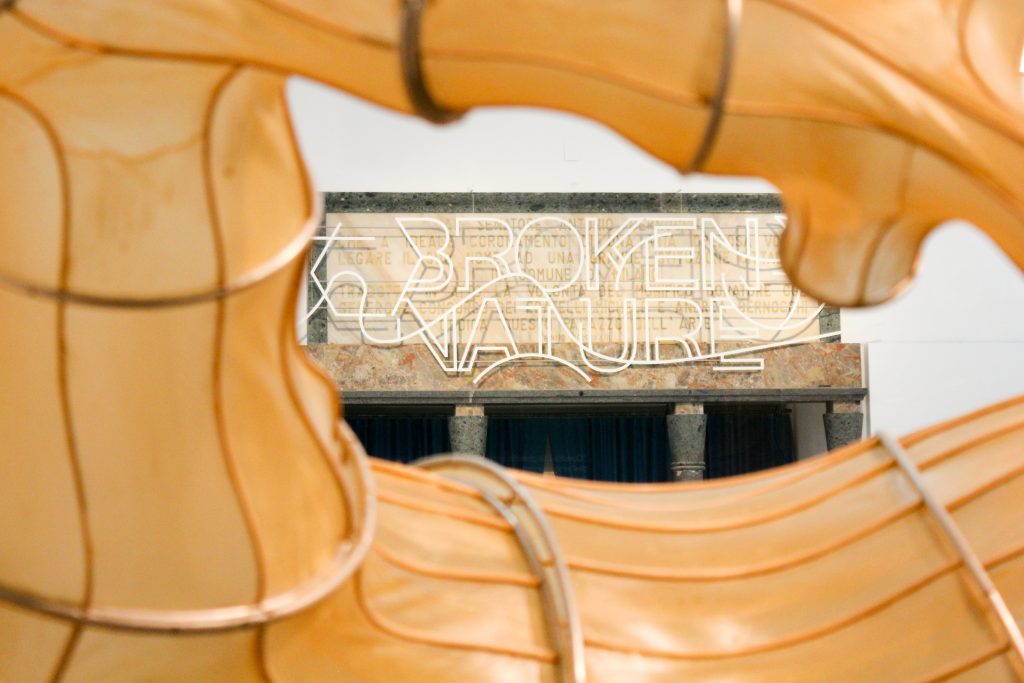
The chief curator of Broken Nature, Paola Antonelli brought together an impressive number of projects—all of which focus on the central theme. The result is an ambitious exploration of pollution, health, borders, unfair trade, extinction, farming, and production, including the social, cultural and economic impact of the ongoing damage done by humans.
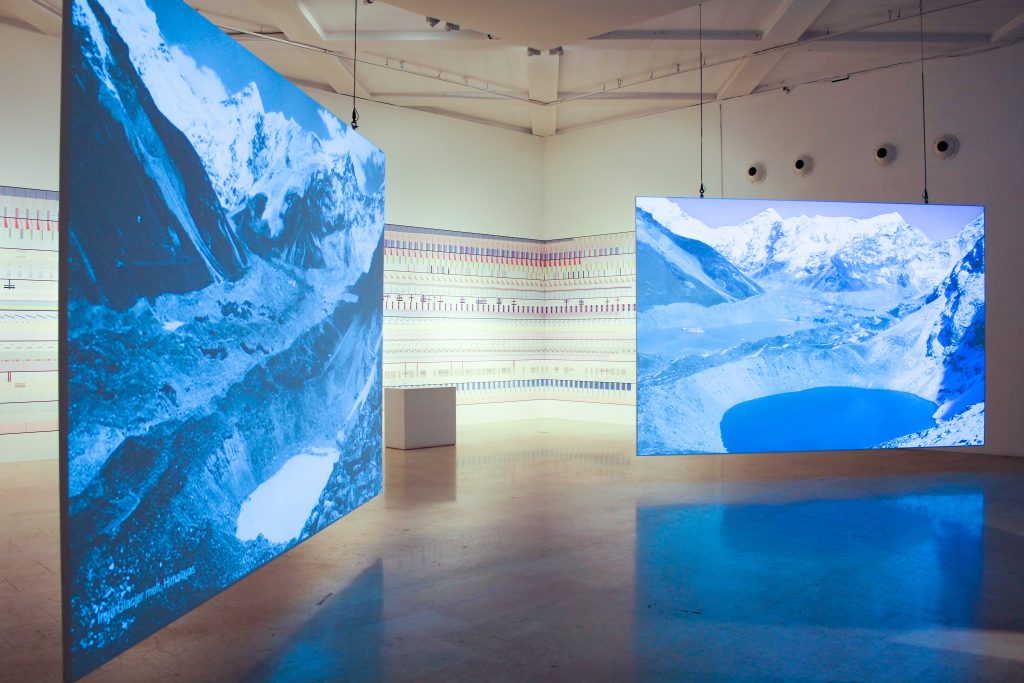
The exhibition begins with “The Room of Change” and visitors find themselves at the apex of the show’s theme, with an installation that speaks to the heart and the brain; provoking emotion and reflection. On two large monitors, satellite images by NASA show the impact of human intervention on the environment—between melting glaciers and structures so invasive they change the landscape forever.
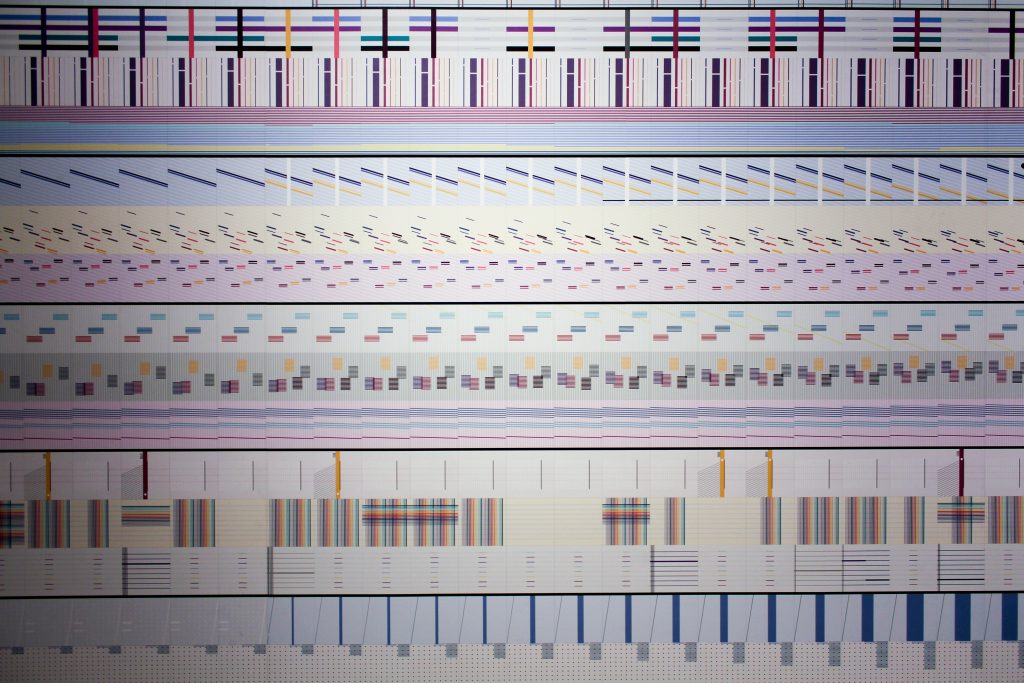
On the walls surrounding these two screens is a large work of data design by Accurat. Gabriele Rossi, Giorgia Lupi and their team have visualized global phenomena (such as the increase in world population and temperatures) alongside more local topics (such as the disappearance of Lake Aral or the decline in life expectancy in Cambodia) and created a sort of graphic tapestry.

In the next room, there are three small projects of great impact—each aesthetically beautiful, but presenting shocking content. With Mandy Barker‘s “Beyond Drifting: Imperfectly Known Animals,” viewers see photographic enlargements of micro-particles from plastic that are ingested by plankton, which in this way enter the diet of larger, marine and non-marine animals—including humans.
Kelly Jazvack collected a series of so-called plastiglomerates—conglomerates of sand and plastic that are formed on the Hawaiian islands. These are essentially fossils of the Anthropocene (the current geological age) in which the impact of humans is evident.

The following work is also a solution. Aki Inomata‘s “Think Evolution #1” is recreation of a shell that no longer exists in nature. In its evolution, octopuses have abandoned their shells in order to be more agile and escape predators. Today some species of octopus replace it with coconuts or shells of other creatures. This Japanese designer has made a transparent ammonite in which an octopus can hide.
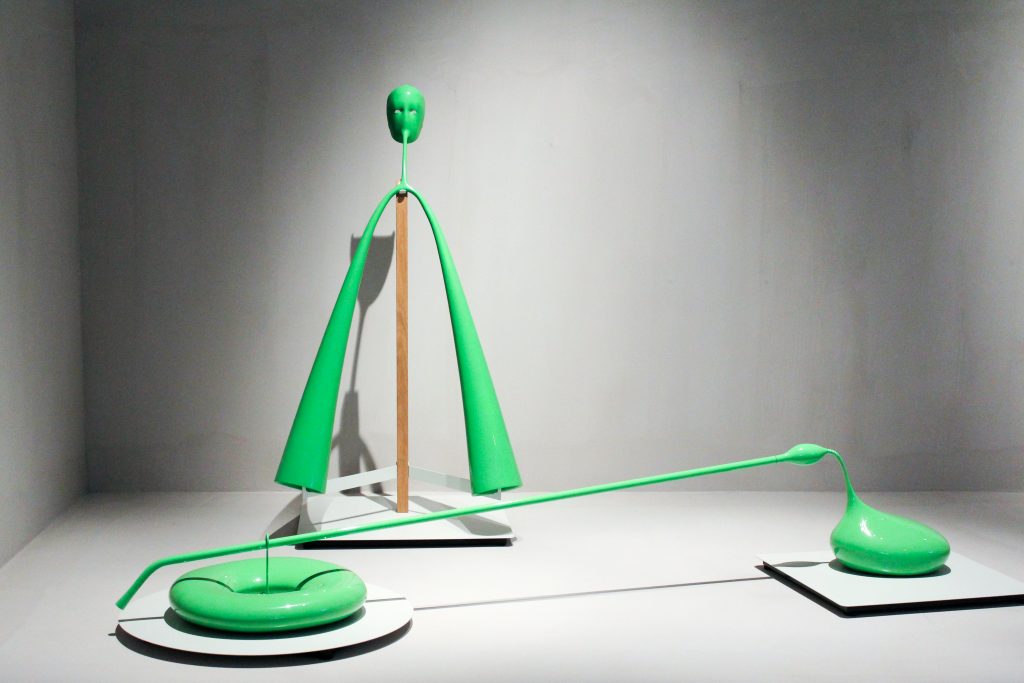
The future of food is unsettling in many ways—one being that due to increases in population and pollution, we may find ourselves forced to eat semi-edible food. Dunne & Raby‘s “Designs for an overpopulated planet: Foragers” are odd prostheses that could allow us to collect unusual foods and partially digest them before ingesting them.
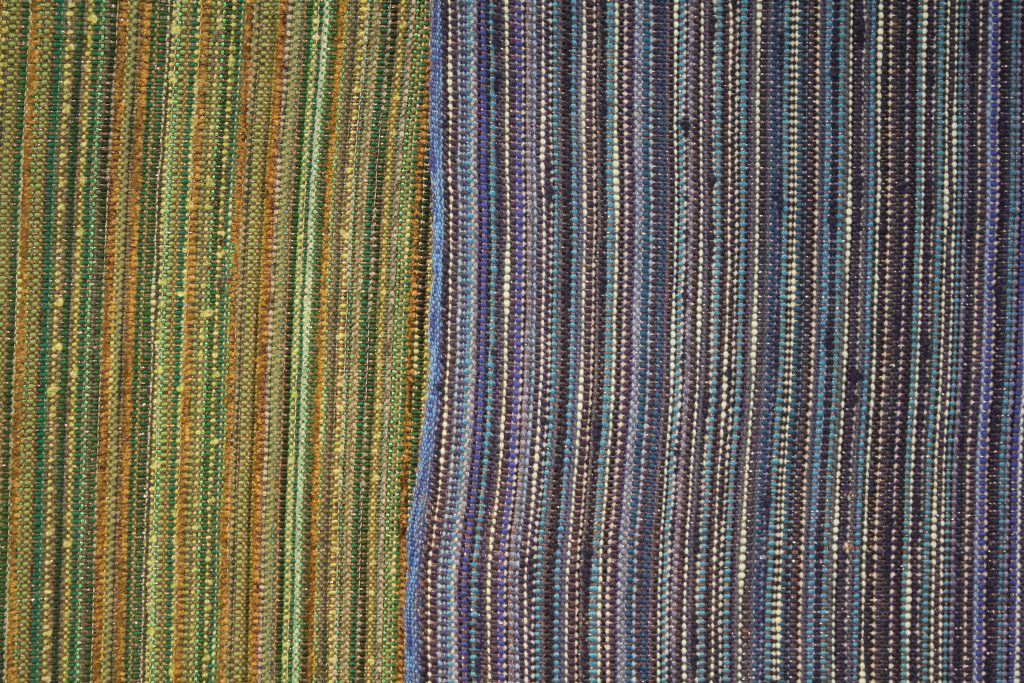
New and alternative materials are also on show here. Such as Studio Klarenbeek & Dros‘ elegant glasses and carafes made out of algae (for Atelier Luma) or the “Mix Tape” fabrics by Scott Bodenner, which are formed from old magnetic tapes—unused finds from the era of the Walkman.
E-waste is the starting point for “Ore Streams,” a video installation and a series of objects from Formafantasma. Simone Farresin and Andrea Trimarchi explore the reality that metals and minerals are inexorably being taken from the underground—in particular by the electronics industry. The result of their investigation is presented through a stunning video and with a collection of office furniture created from leftovers from the production of electronics and a computer.
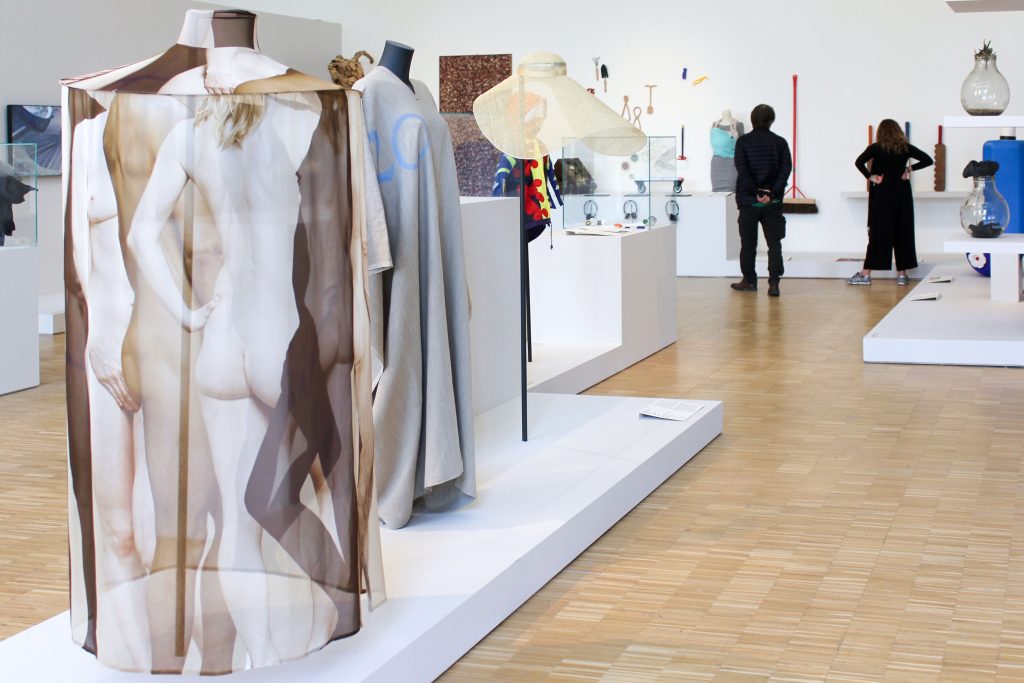
Central to Broken Nature are the many projects related to the body—new takes on apparel that are sustainable and innovative. Buro Belén‘s “SUN+” was designed to protect people from the sun—without using sunscreen, which is contributing to pollution thanks to the chemicals in it and the plastic bottles it’s sold in. Useful and pragmatic, these items also look like avant-garde couture.

Created for a generation that will probably have robots in their daily lives is work by Stephan Bogner, Philipp Schmitt and Jonas Voigt. This mechanical arm can feed a baby and comes with a costume, in order to keep kids happy.
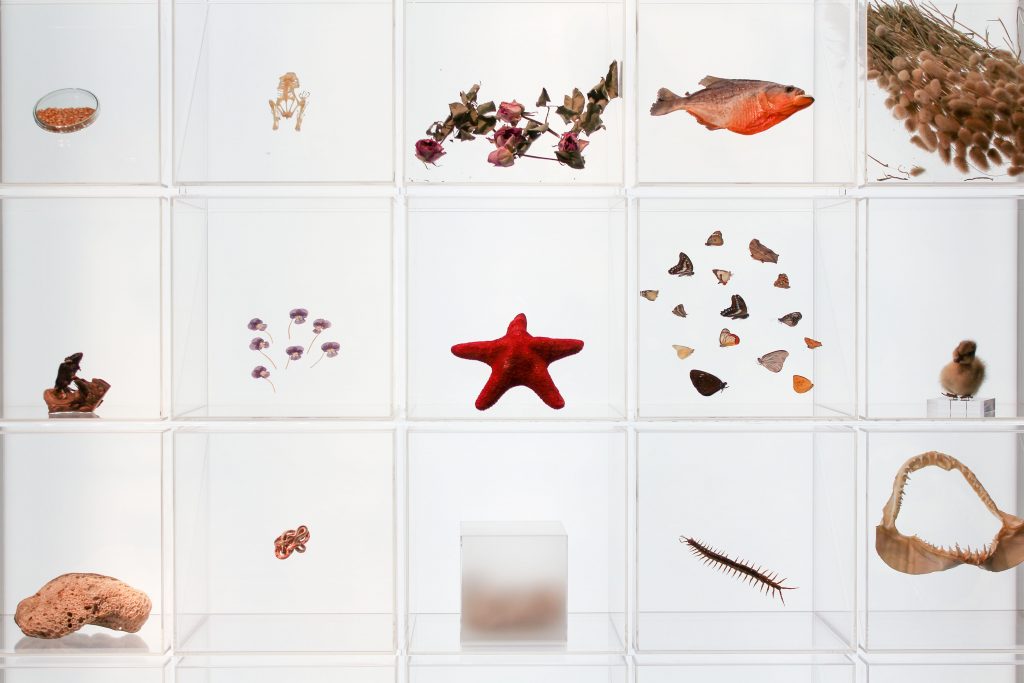
Paola Bay and Armando Bruno’s “Reliquaries” features natural treasures that exist today, but displays them as precious artifacts from a forgotten time. It’s a very simple and effective installation that shows seeds, animals, water, crustaceans and eggs. Each item is fairly common today, which serves as a bleak reminder that they may not always be.
The final installation is a real song of hope: the sounds of whales. Their relaxing noises are transformed into data visualizations, thanks to a project by PAIR and Creative Lab at Google. The overall aim here is to understand whales and their behaviors entirely.
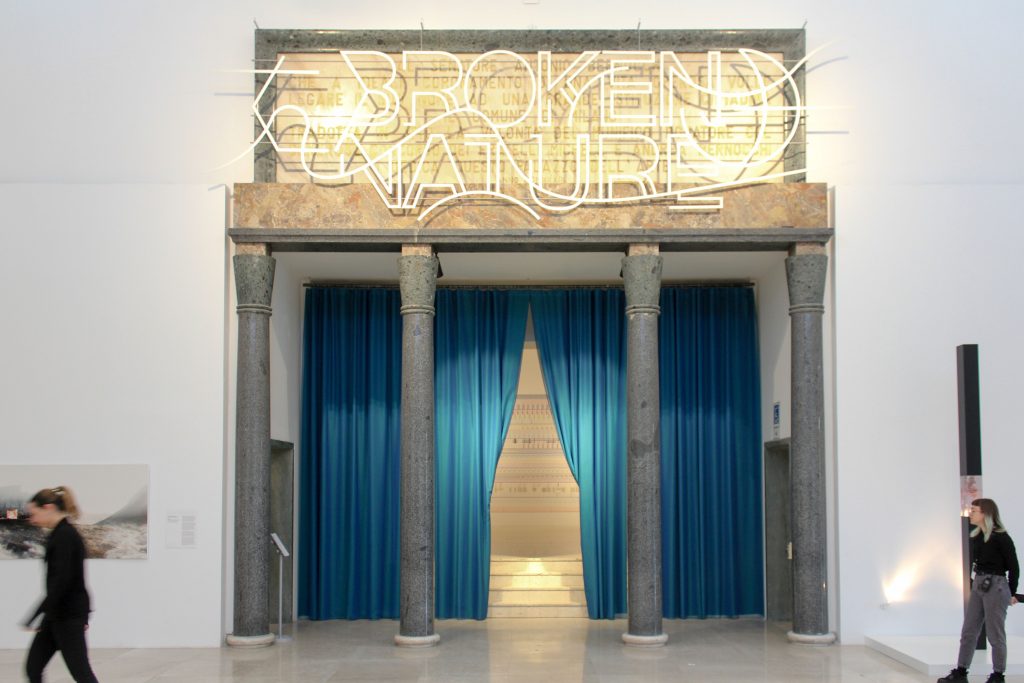
The journey through Broken Nature is emotionally and intellectually challenging. At the end of the exhibition more and more questions arise, but some are answered too—several offering a tragic scenario. However bleak though, what’s certain is that designers are working to find new alliances between humans and nature.
Broken Nature and XXII International Exhibition at La Triennale di Milano are open until 1 September 2019.
Images by Paolo Ferrarini












